Finding the best backpack for the Camino de Santiago can be quite tricky. The available options, both in stores and online, are pretty much endless. And there are many reasons why you’d want to get yourself a brand-new backpack.
A good quality backpack is one of the three most important items on my packing list. A well-fitting pack will make your pilgrimage much easier.
In this post, I’ll provide reviews of the market’s most popular products of this type and also take a look at a couple of factors that you need to keep in mind for the Camino.
If you’ve got no time to read through all the reviews, I consider Osprey Farpoint 40L Backpack as the best option for those about to walk the Camino.
Reviews of the Best Backpacks for the Camino de Santiago
In this part of the article, I’ll provide short but comprehensive and informative reviews of the market’s best backpacks for this journey. The bags will be separated into four categories based on their size – described below in the buying guide.
The Best Daypacks for the Camino de Santiago
Day packs are only useful if you have a company carrying your main backpack from location to location. Daypacks are too small if you are carrying your own gear each day,
Osprey Talon 22 Daypack
Specifications:
- Volume: 22 liters
- Weight: 1.91 lbs
- Colors Available: 5
One thing I particularly like about Osprey Talon 22 is that it offers a genuinely versatile technical performance. This is largely due to its padded AirScape ridged back panel, as well as the adjustable harness that allowed me to customize the carrying comfort.
During the testing period, the design handled loads quite admirably. On the other hand, the daypack’s blinker patch, trekking pole, and ice axe attachments enhanced utility across multiple hikes.
However, the sizing skews short – pilgrims with taller frames should definitely evaluate extended options. After all, walking the Camino is not a small undertaking, so you’ll really want to maximize strap effectiveness and avoid torso gaping. I should also point out that I struggled to stash bulkier water bottles in the daypack’s slim side pockets.
Still, the model’s quality construction and breathable carrying comfort confirm its reputation – once you learn how to use its features, you will love it – just like I do. For more Osprey backpacks, see my Osprey pack reviews.
PROS:
- The padded ridged back panel prevents bulging
- Fully adjustable harness & accessories
- Bomber construction excels across contexts
CONS:
- Short frames compromise strap utility
- Slim side pockets limit bottle carrying
- Significant learning curve mastering features
Osprey Daylite Plus Backpack
Specifications:
- Volume: 20 liters
- Weight: 1.28 lbs
- Colors Available: 1
The Osprey Daylite Plus is a fantastic little backpack – it bridges urban and backcountry worlds thanks to its ventilated carrying comfort and dedicated laptop sleeve that easily swallows digital essentials.
The model’s 20-liter capacity handles general loads without any issues, while its side stretch pockets secure standard water bottles.
One thing I didn’t like, however, is the top-loading exterior pocket, which complicated access when worn, which stands in sharp contrast with previous side-zipper designs. I also routinely maxed out capacity on extended hikes that require bulkier cold-weather layers.
Still, its no-fuss sensibility suits minimalist Camino walkers looking to downsize devices and accessories into a single, sleek servant. I’d faithfully recommend it every week and weekend alike.
PROS:
- Padded laptop sleeve enables work transportation
- Breathable back panel prevents sweaty office re-entries
- Compresses efficiently for compact stowing
CONS:
- Smallish sizing for all-day expedition use
- Reduced access from top-loading exterior pocket
- Lacks advanced carrying features
The Best Small Backpacks (35 Liters) for the Camino de Santiago
If you are packing ultralight for the Camino, you will find a great backpack in this section.
Mountaintop 35L Backpack
Specifications:
- Volume: 35 liters
- Weight: 2.07 lbs
- Colors Available: 3
After thorough testing, I can confidently say that the Mountaintop 35L Backpack provides ample 2-day capacity in a padded, water-resistant frame, which even sports customizable hydration compatibility. Its streamlined design carried supplies steadfastly while leaving minimal dead weight behind – just the way I like it.
On the not-so-bright side, its smallish side pockets complicate water bottle access. There are also minimal external organizational options for scattered accessories, like maps or hats.
Similarly, the lack of a shaded back panel led to sweat accumulation during a sunny day hike despite the model’s breathable construction. As such, this backpack may not be the best option for a summertime Camino walk.
Still, the Mountain 35L more than meets the 2-day demands of fast-and-light exploration at a forgettable price. So, if you’re planning to walk the Camino during one of the shoulder seasons, do take it into consideration – it is, after all, immensely popular among hikers for a good reason.
PROS:
- Streamlined carrying with hydration readiness
- Water-resistant shell protects contents
- Inexpensive price allows impulse purchasing
CONS:
- Small side pockets complicate bottle access
- Lacks exterior organizational pockets
- Open back risks sweaty loads, lacking airflow
Kelty Asher Travel Pack
Specifications:
- Volume: 35 liters
- Weight: 1.83 lbs
- Colors Available: 2
I found that the Kelty Asher 35 backpack provides ample storage for day-long excursions. Thanks to its 35-liter volume and an array of exterior attachments, this backpack easily swallowed most of my hiking essentials, as well as a pair of hiking poles and some other accessories. Dual water bottle pockets secured standard containers, while the pack’s cavernous front stretch pocket welcomed bulky layers.
Unfortunately, however, the Asher 35 is not without drawbacks. I had to repeatedly reposition the model’s leaning hip belt before each outing, which quickly became quite tedious. The rigid frame sheet introduced noise, distracting other hikers in my group while I was testing the backpack.
Nevertheless, I still consider Asher 35 to be a worthwhile purchase, especially if you care about the looks – this is a seriously well-designed backpack.
PROS:
- Cavernous stretch exterior pocket
- Bottle-securing side compression straps
- A seriously attractive backpack
CONS:
- Noisy materials
- Hip belt requires pre-wear adjustment
- Excess straps dangle without keepers
The Best Medium-Sized Backpacks (40 Liters)
This is the size that I usually buy. Although I am a fan of packing light, I usually take a few extra things or pick up other gear along the way.
Osprey Farpoint 40L Backpack
Specifications:
- Volume: 40 liters
- Weight: 3.4 lbs
- Colors Available: 5
As far as I’m concerned, the Osprey Farpoint 40 backpack is among the best backpacks available on the market – perhaps even the best. It provides 40 liters of storage space in a panel-loading format, ideal for one-bag travel.
During the testing, its lightweight, recycled shell resisted abrasion (despite very rough handling), while its stable suspension carried 20-pound loads without any issues. Two lockable zippers, on the other hand, secured contents from tampering amid hauling or storage.
However, aside from a small top pocket, Farpoint has almost no internal organization. Moreover, the fact that it lacks water bottle stashes forced me to stow my bottle in the front stuff pocket.
Still, years of proven pedigree and conscious material selection confirm Farpoint’s reputation – it’s a fantastic choice for anyone getting ready to walk the Camino.
PROS:
- Proven durability across years of testing
- Stowable straps enable checked luggage
- External clips allow accessory expansion
CONS:
- Lacks compartments complicating access
- No water bottle pockets forcing creative stowing
- Outdoorsy aesthetic prohibits boardroom blending
Deuter Futura Pro 40 Backpack
Specifications:
- Volume: 40 liters
- Weight: 3.57 lbs
- Colors Available: 1
The Deuter Futura Pro 40 has everything you’ll need for your Camino de Santiago walk. It’s a genuinely versatile 40-liter model ready for multi-day trekking thanks to its adjustable Aircomfort suspension and an array of accessibility refinements.
Dual hip belt pockets, side compression straps, and a standalone lower compartment enable storage customization, while an integrated rain cover and mesh back panel boost practicality.
However, during the testing, I noticed how the fixed-length frame and partial-panel ventilation risked ride-up and instability when loading the heaviest gear high. What is more, the top-loading-only main compartment complicated access.
Still, the durability and signature carrying comfort justify the (quite costly) investment for core Deuter loyalists but also for pretty much anyone looking for a quality backpack for a long-distance trek like the Camino.
PROS:
- Pivoting, padded hip belt prevents soreness
- Multiple access points ease interior use
- Rain cover and pole holders boost utility
CONS:
- Non-adjustable frame risks loose carry
- Mesh back skips full ventilated contact
- Top-loading main area inhibits access
The Best Large Backpacks (45 Liters)
I am adding these – but I strongly suggest you don’t need a backpack this size.
Teton Sports 45L Backpack
Specifications:
- Volume: 45 liters
- Weight: 3.7 lbs
- Colors Available: 12
Next up is Teton Sports 45L, a backpack providing Camino pilgrims with ample storage thanks to its 45-liter capacity, together with external strapping options and sparse suspension.
Durable fabrics and an included rain fly aid utility, while the model’s low price brings affordability. Unfortunately, however, the backpack’s abrasive fabrics chafed my bare skin during packing transitions. Similarly, multiple narrow openings inhibited item stowage and recovery, requiring quite a bit of patience or ingenuity.
But the budget-friendly bundle still makes a welcome thru-hiking companion for uncompromising mileage seekers tolerant of bulk and roughness. You won’t make a mistake by going with Teton Sports 45L for the Camino – just don’t expect refinement rivaling premium options.
PROS:
- Included rain fly boosts weatherproofing
- External straps swallow bulky items
- Price enables easy ownership
CONS:
- Unlined straps risk skin irritation
- Multiple narrow openings inhibit access
- Fixed lid prohibits capacity adjusting
Peak Design Travel 45 Backpack
Specifications:
- Volume: 45 liters
- Weight: 4.51 lbs
- Colors Available: 1
The Peak Design Travel Backpack 45L comes with ample panel loading storage in a streamlined, feature-packed frame.
Its dedicated side access allowed me to quickly unzip all of my gear, while its hideable straps enabled overhead heaving or suitcase stacking with ease. What is more, multiple expansion and compression options allowed me to customize capacity depending on the length of each hike, a feature I greatly appreciated.
When it comes to drawbacks, questionable zipper choice risks dependable access. Also, the model is relatively heavy at 4.51 pounds and looks quite bland.
Still, thoughtful touches like hidden water bottle pockets or magnetic tidiness for a rain shell bring clever reliability. The backpack is a good choice for any kind of backpacking, including the Camino pilgrimage.
PROS:
- Panel loading provides packing flexibility
- Hideable straps enable streamlined transport
- Expansion & compression customizes capacity
CONS:
- Zoom zippers risk breaking abroad
- Cavernous depth inhibits interior access
- Outdoorsy aesthetic prohibits boardroom styling
How to Buy the Best Backpack for the Camino de Santiago
As someone who’s been through a fair share of packs, I understand the importance of finding the perfect balance between comfort, functionality, and style. Here are a few tips on how to find the perfect backpack for your Camino journey:
Determining Your Needs
Whenever I’m shopping for a backpack, I focus on the specific type and the capacity required for my activities.
Types of Backpacks
Backpacks come in various structures that cater to different needs.
I consider daypacks for everyday use or short hikes, as they are compact and light. When planning for more rugged adventures, I look to internal frame backpacks designed to follow the contour of my back, making them more stable.
If I’m tackling a trail that requires more gear or needs better airflow between the pack and my back, external frame packs can be the better choice since they offer good load distribution and ventilation. Out of these three types, the last one is probably the best choice for the Camino, but only if you’re not planning to have your belongings transferred from one accommodation to another.
Backpack Capacity
When shopping for a backpack, it is crucial to consider how long your journey is going to be and which distances you’re planning to hike.
On big hikes such as Camino, it is possible to have the bulk of your stuff transferred between hotels/hostels for you. If you decide to go with this option, you’ll be able to carry only a daypack for most of your pilgrimage. You can use a larger bag – or a suitcase – for the rest of your stuff.
The volume of backpacks is typically measured in liters. This measurement can be of great help when you’re planning your journey:
- Daypacks – As mentioned above, these are perfect for folks intending to use tour companies. You will use only your daypack while hiking – the rest of your belongings will be transferred from one accommodation to another.
- Small Backpack (35 liters) – These backpacks are best suited for ultra-light trekkers. If you’re planning to carry only a small sleeping bag or just a sleeping bag liner, get one of these backpacks.
- Medium-Sized Backpack (40 liters) – Most people hiking the Camino use medium-sized bags. With good planning, you should have no trouble fitting everything you’ll need for the journey into one of these backpacks.
- Large Backpack (45 liters) – It goes without saying that a bag of this size can easily accommodate more belongings and a bigger sleeping bag. These are perfect for when you need more cold-weather gear, in the early spring or late autumn.
In case you’re planning to travel with a buddy and have most of your stuff transferred between accommodations, consider carrying a very small bag. This is because you’ll be able to share some things, like the phone battery pack or the first aid kit.
Key Features to Consider
When picking a backpack, I also focus on material and durability, comfort and fit, and the specific features that cater to my needs.
Material and Durability
The material of a backpack is critical to its lifespan and performance. Over the years of hiking, I’ve come to realize that nylon and canvas are among the top choices for quality and durability.
Nylon, especially with a high denier count, is both tear-resistant and durable. On the other hand, canvas is sturdy but can be heavier. I always check for water-resistant or waterproof coatings that help protect my gear.
Comfort and Fit
The right backpack should feel like an extension of myself, especially on a long journey like the Camino. Comfort is absolutely crucial, and it begins with a snug fit.
I ensure that the torso length matches mine and that the suspension system is adjustable. An ergonomic hip belt and shoulder straps with sufficient padding distribute weight evenly.
This is especially important you’re carrying heavier loads for extended periods – like when you’re walking to Santiago de Compostela.
Backpack Features
Specific features make a backpack versatile for various activities.
For hydration on the go, a compatible hydration bladder or reservoir is a genuine game-changer. A sleeping bag compartment is helpful for overnight trips, while ample attachment points, like a daisy chain, allow me to secure extra gear.
I prefer durable zippers and a mix of compartments, including external pockets for easy access. The top lid should fit snugly to secure my belongings inside.
Loading and Packing Tips
When I pack my backpack for any kind of adventure, I focus on organizing my gear efficiently and managing pack weight effectively to ensure comfort and accessibility.
How to Pack Your Backpack
I always start packing by lining my backpack with a garbage bag to keep my belongings dry.
I then pack my sleeping bag at the bottom as it’s lightweight and creates a cushioned base.
My clothes follow, which I roll tightly to maximize space. I tuck my food in the center, close to my back, for stability.
Weight Distribution
To maintain good posture and balance, I distribute weight in my pack so the heaviest items are near the bottom of my pack.
I place denser, heavier items, like food and my water bottle, near my spine. I keep lighter items on top or in outer pockets.
This also makes it easier to locate items quickly.
Essential Gear to Carry
Essentials include a hydration bladder, which I keep accessible. I carry hiking poles (very important for the Camino) attached externally for easy retrieval.
Luxury items are limited, as they add unnecessary weight. I always reserve space for essential safety gear and a first-aid kit because safety is my top priority.
Maintenance and Care
When I invest in a backpack, I make sure it lasts as long as possible by giving it the proper care and attention it needs.
This involves regular cleaning, appropriate storage, and timely repairs or replacements of worn-out parts.
Cleaning and Storage
Always empty my backpack completely before cleaning it. Then, check the manufacturer’s label for specific instructions, as some materials require different treatments.
If it comes with a rain cover, wash it separately. I use a mild soap and a soft brush to gently clean the bag, paying close attention to the stitching, which can collect dirt. After cleaning, I air dry my backpack away from direct sunlight as UV rays can degrade the fabric over time.
For storage, I keep my backpack in a cool, dry place and avoid folding or compressing it, which can damage the frame and stays, especially if it has aluminum stays or a frame sheet.
I also make sure it’s completely dry before storing it to prevent mold and mildew.
Repair and Replacement
You’ll want to regularly inspect your backpack for any sign of wear or damage, especially around areas with heavy stitching and near the frame.
If I spot a tear early, I can often repair it myself with a sewing kit or duct tape for a temporary fix. For more significant repairs or when parts like buckles or zippers break, I’ll seek a professional or check if the manufacturer offers a repair service.
Regarding the frame, if my backpack has aluminum stays, I can sometimes bend them back into shape if they get slightly warped. However, for more severe damage, I might have to replace the stays or the entire frame sheet.
It’s always best to refer to the backpack’s warranty too, as some manufacturers provide coverage for certain types of damage or defects.
The Takeaway
Hopefully, this article has helped you find the perfect backpack for your Camino de Santiago.
As far as I’m concerned, Osprey Farpoint 40L Backpack is the best choice for this trip. However, in case you need something smaller or bigger, make sure to check out the other reviews – you just may find the perfect backpack for your journey across Spain.

I love hiking, backpacking, and camping. From the Camino de Santiago to the West Highland Way in Scotland or simply a great day hike on the weekend. Hiking refreshes me, my mind, and keeps my body reasonably fit. So far I have walked three Camino routes and many other long distance hikes in the UK, Canada, and around the rest of Europe. One of the best was my hike up Ben Nevis.

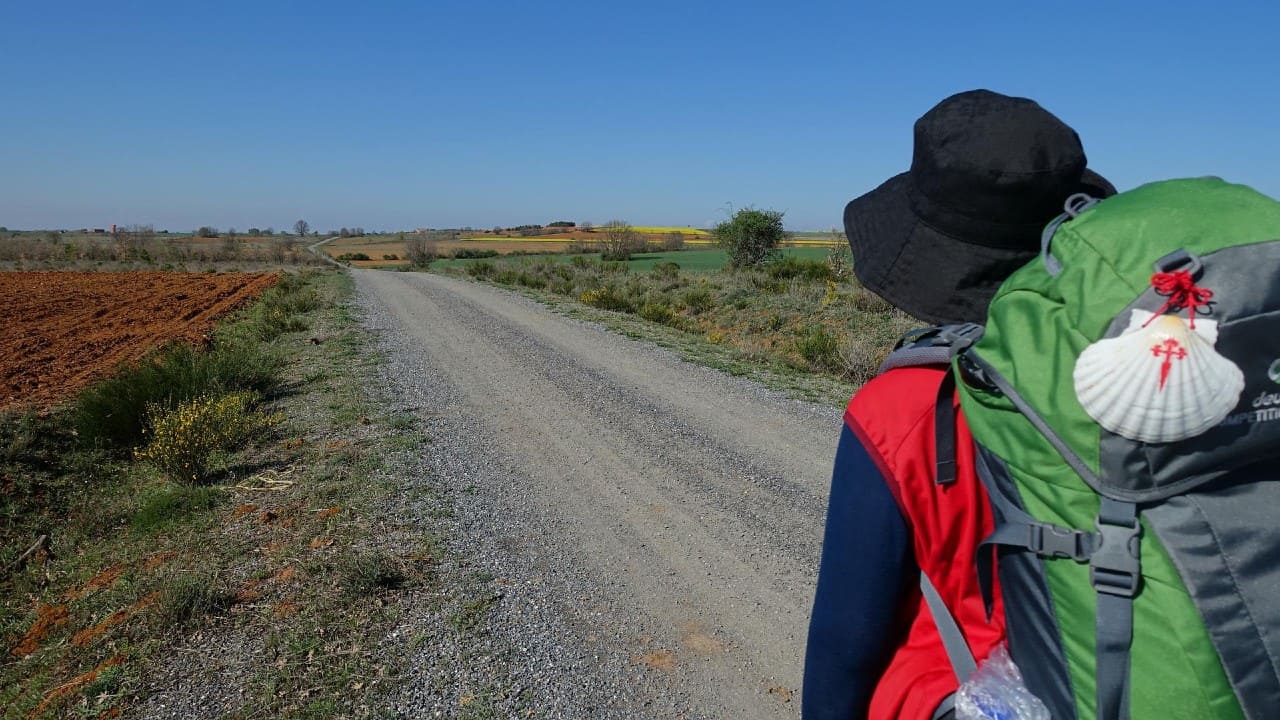
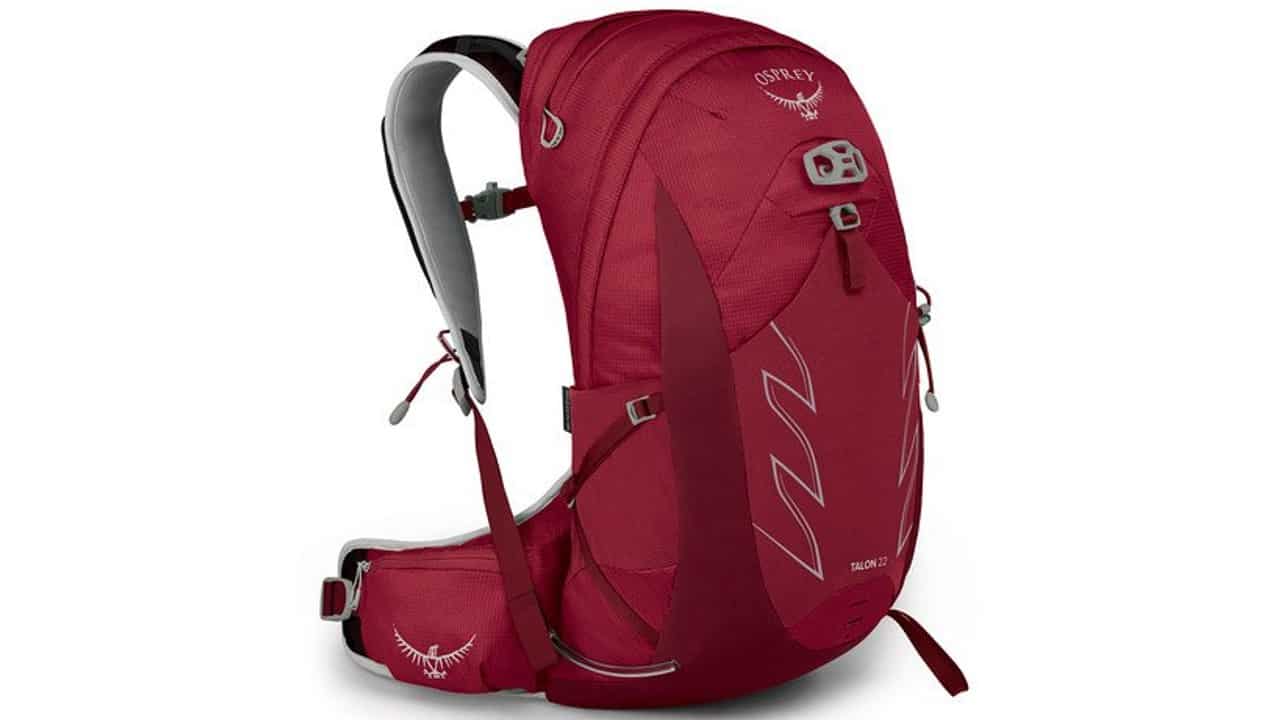
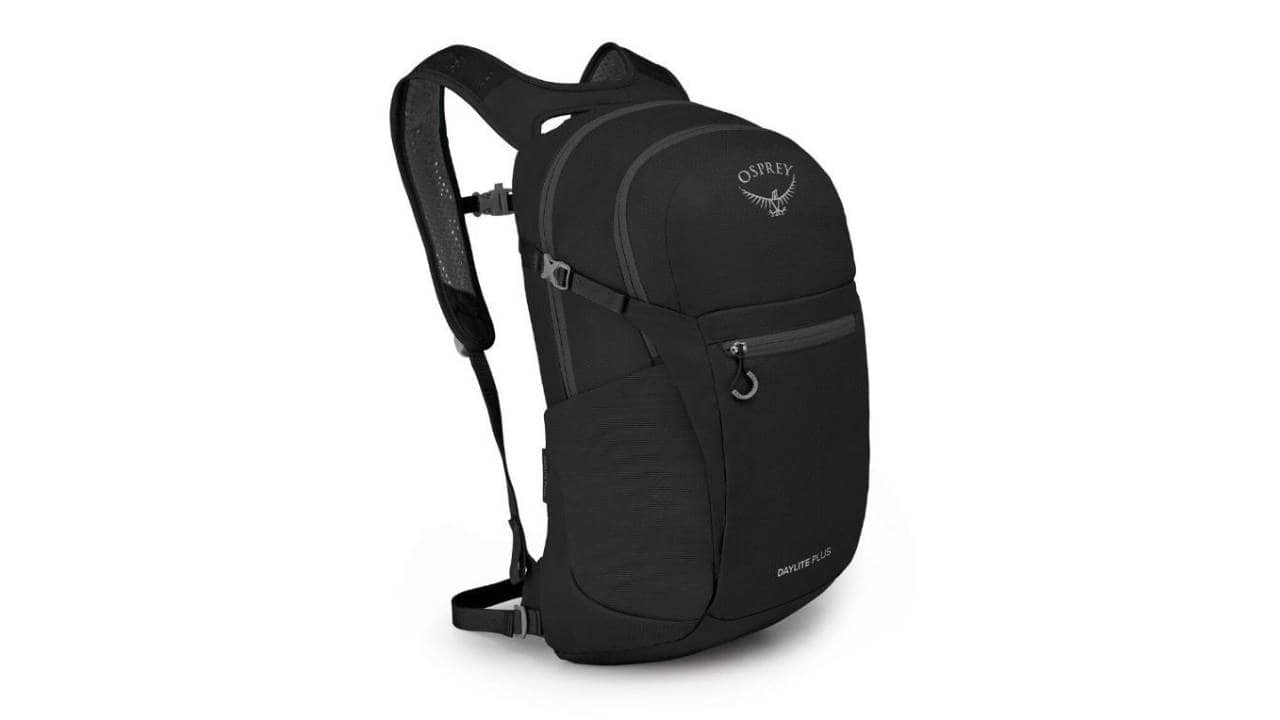
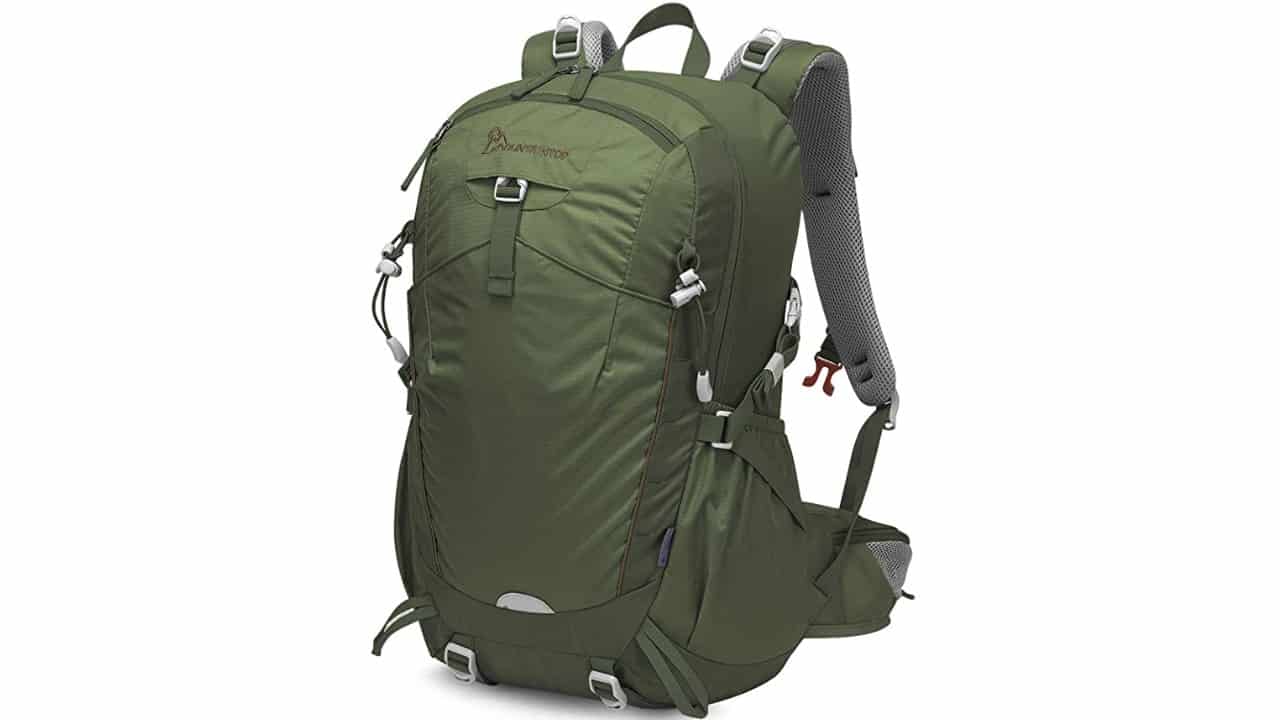
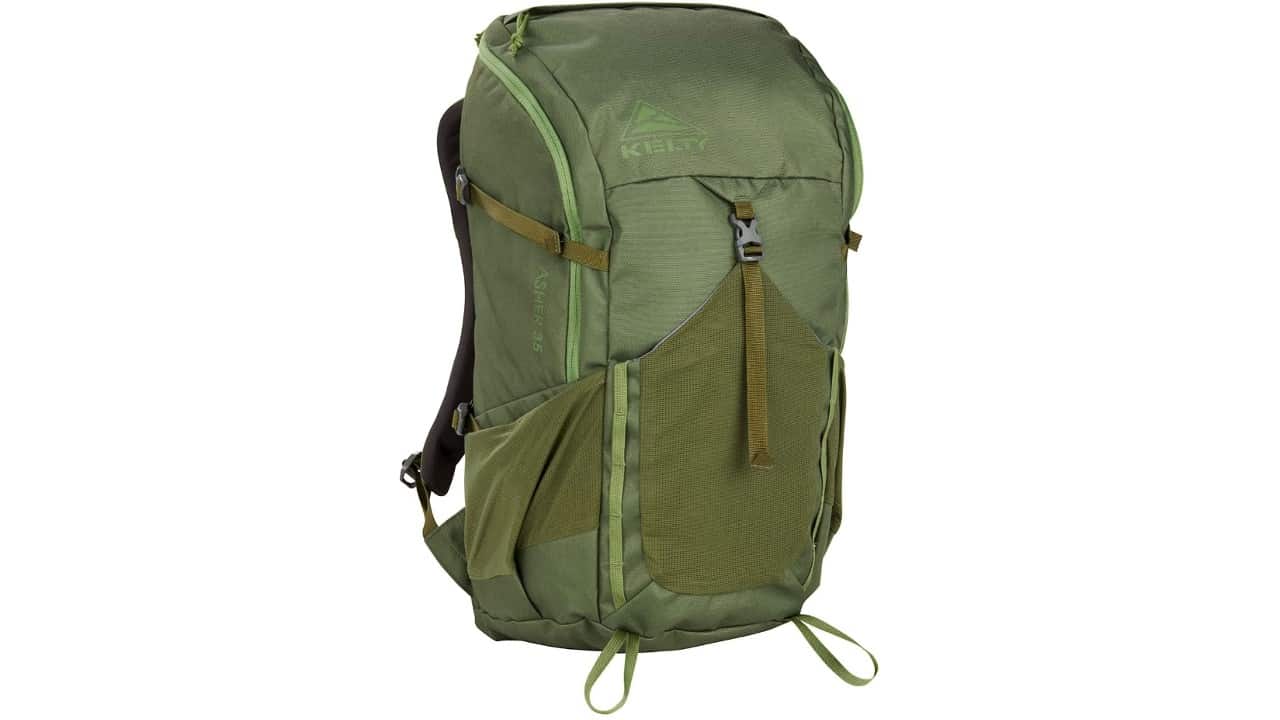
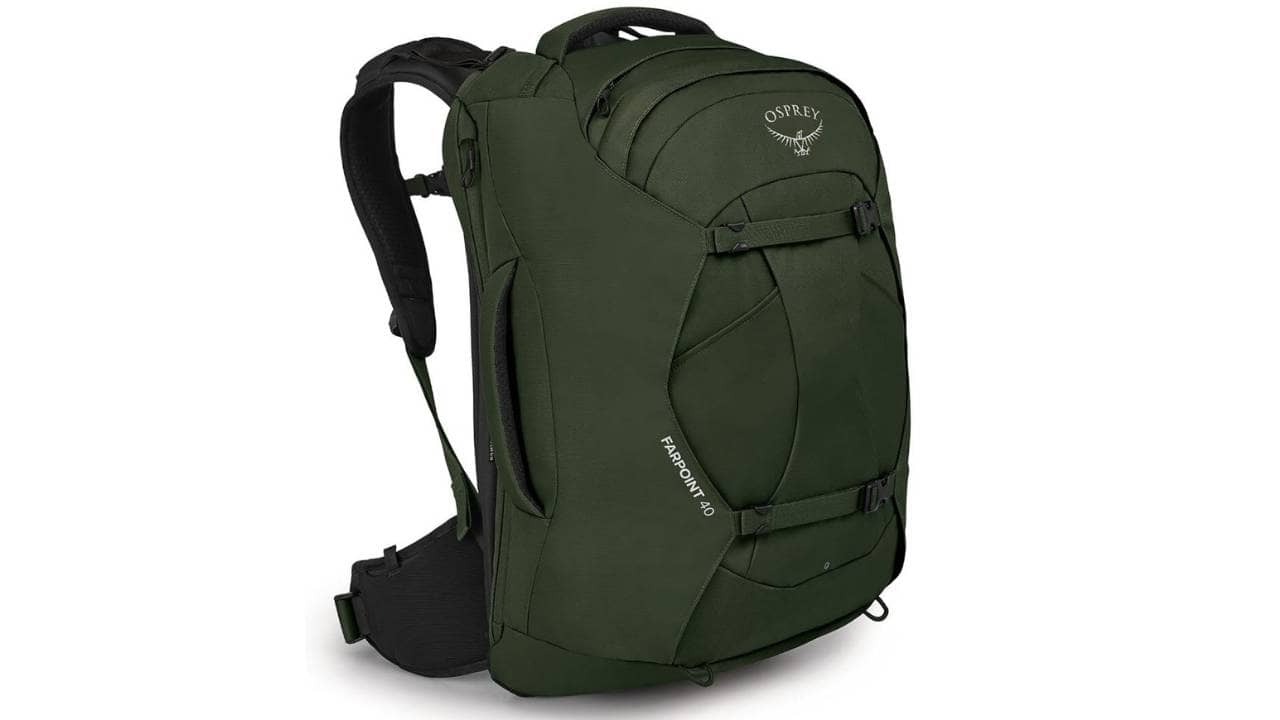
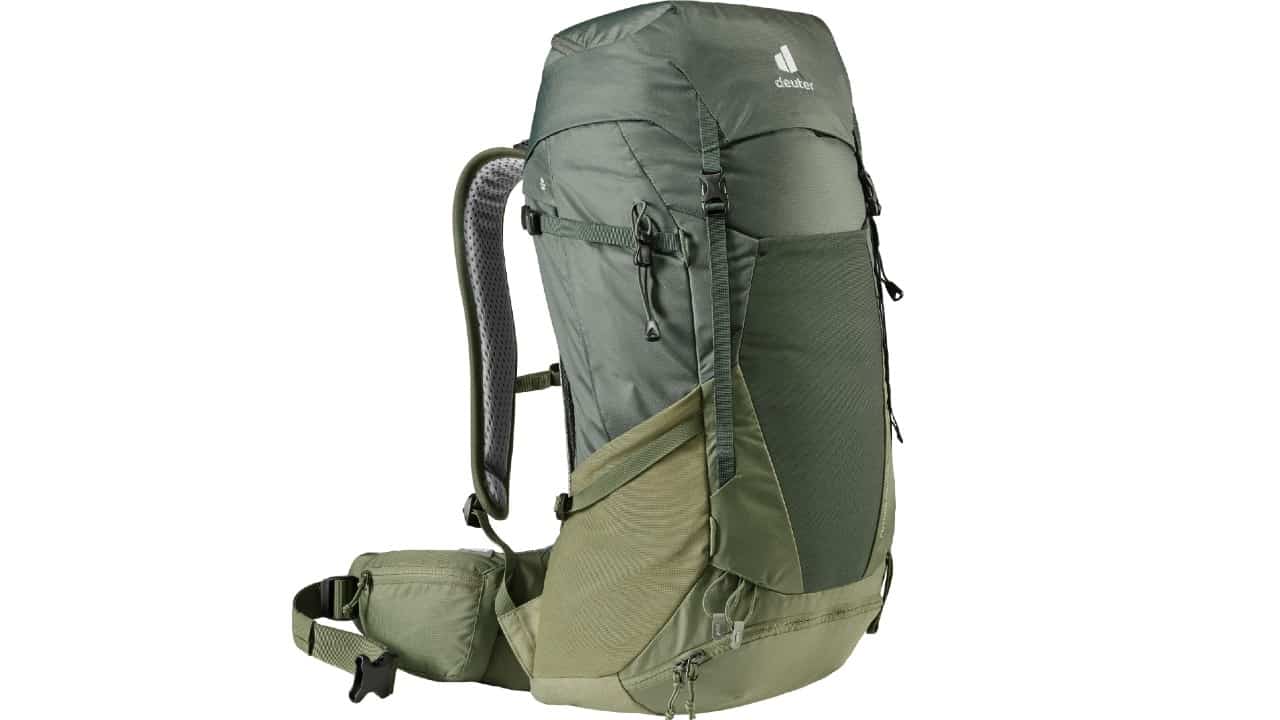
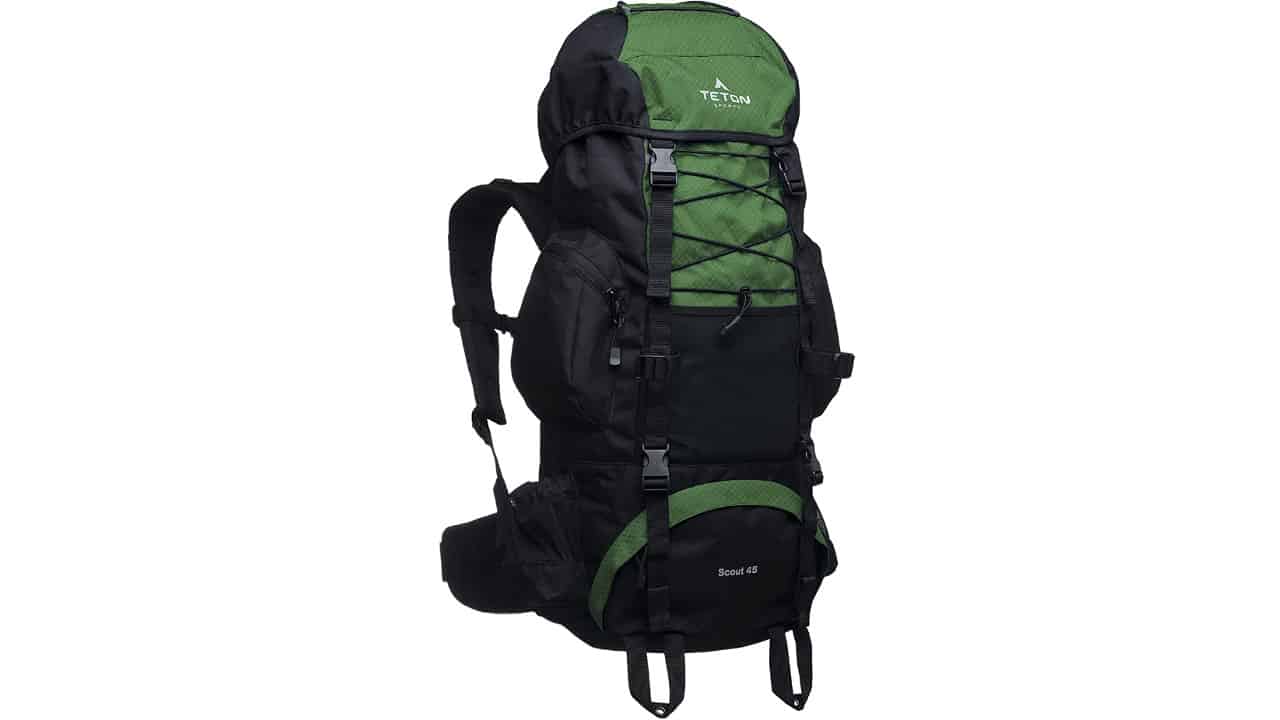
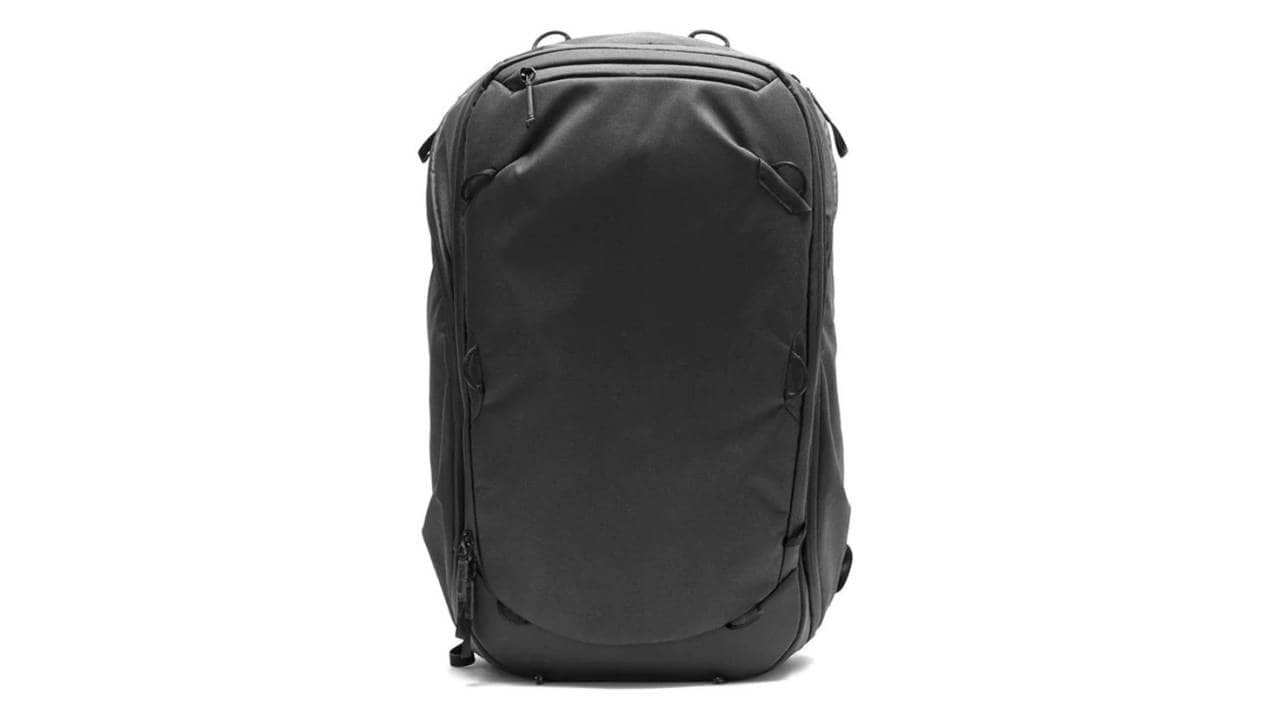
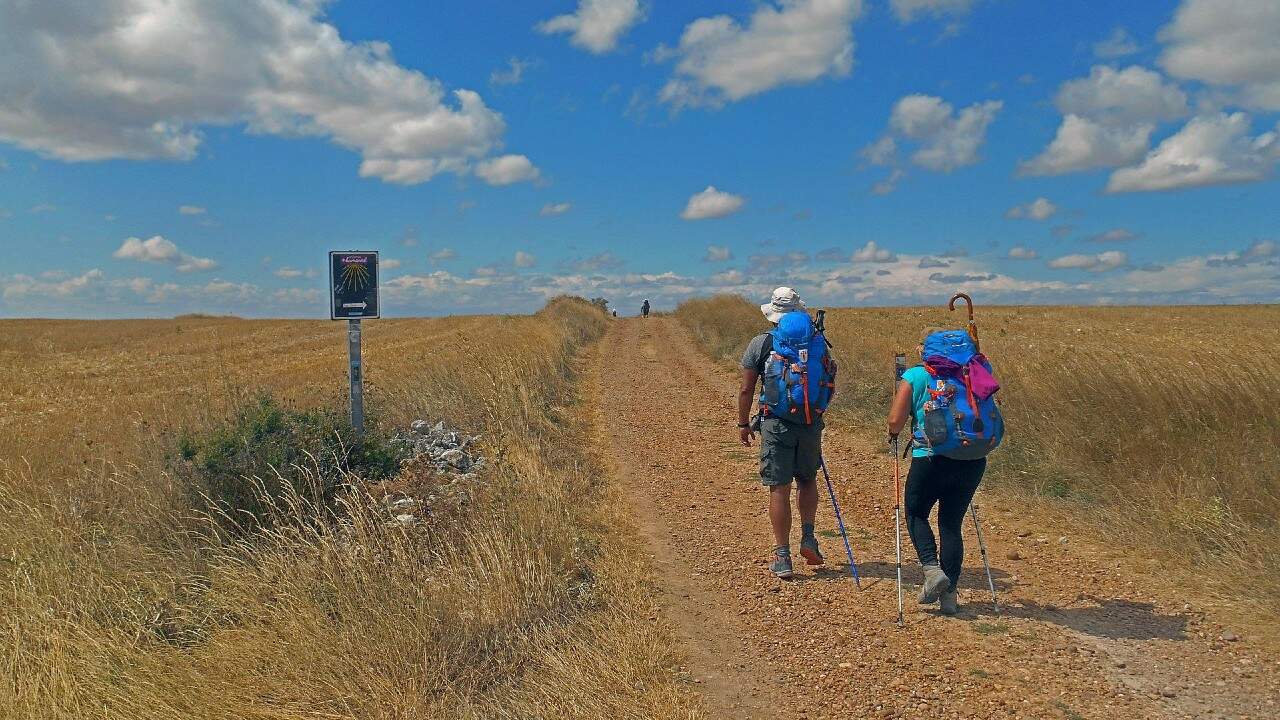
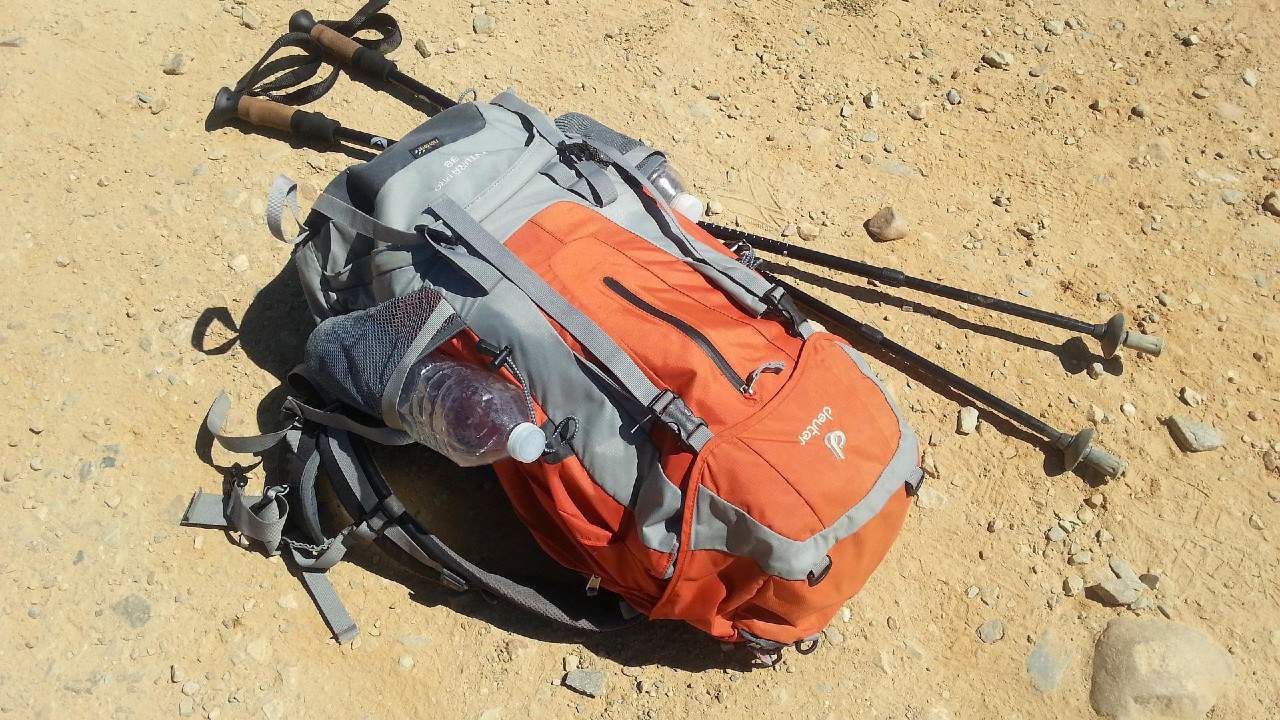
Walked Five caminos–Norte;Frances;Portugese;Primitivo.
Always carry my own pack; 50 liter 3 times; 60 liter twice. Definitely need outside straps if using small pack to carry sleeping bag and sleeping pad. YOU will need them!
Still can NOT understand why some people but the MOST expensive, light weight packs and gear to have a taxi carry them! If you are only a tourist , there is nothing wrong with a suitcase to place in the taxi. Lot of people use multiple suitcases when having taxis do their Camino.
Good assessment. Twice used my trusty 60 L Deuter….. Blue
Biggest lesson each time was to get it fitted with anticipated weight. Walk in with it in advance of the Camino.